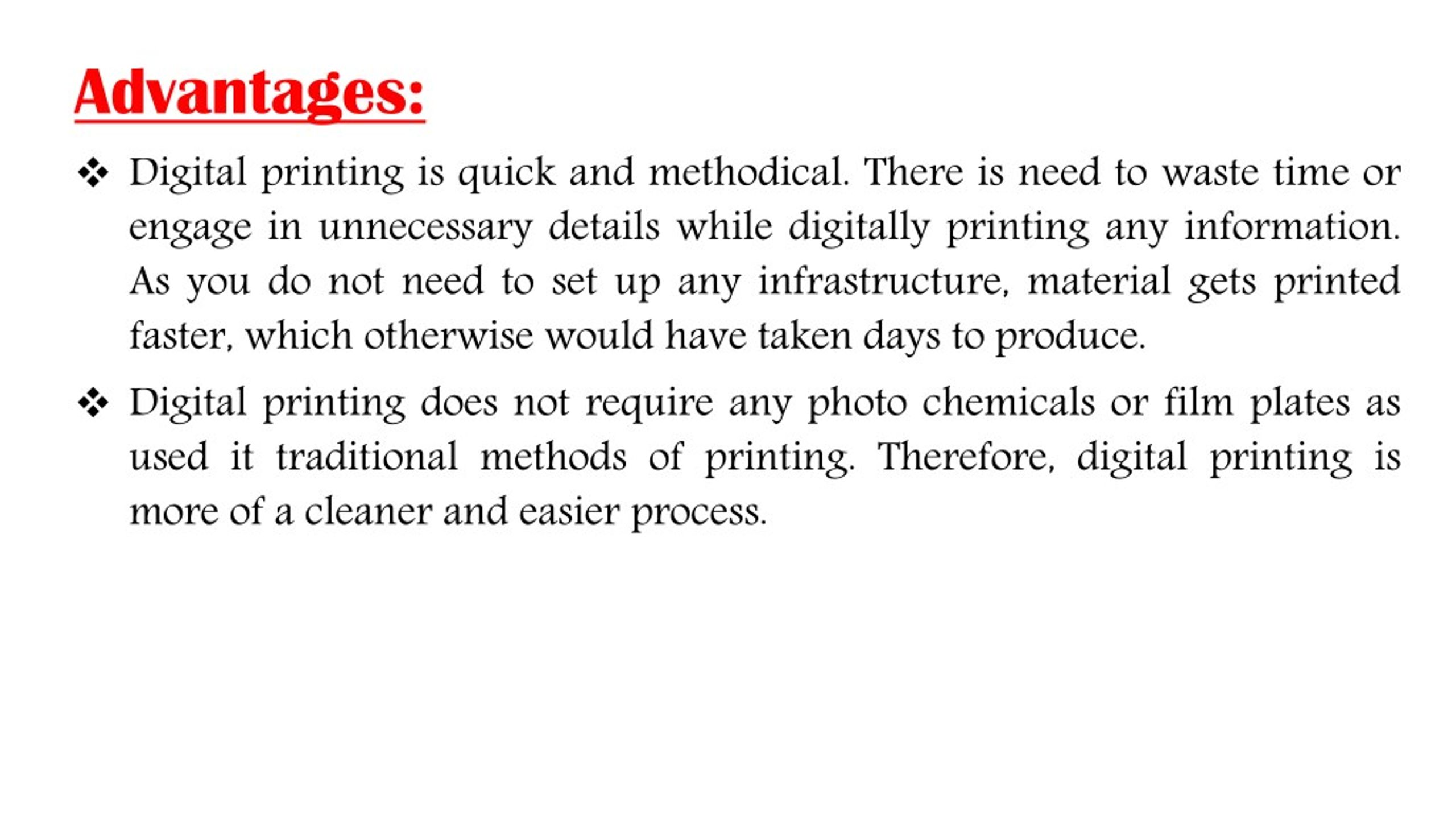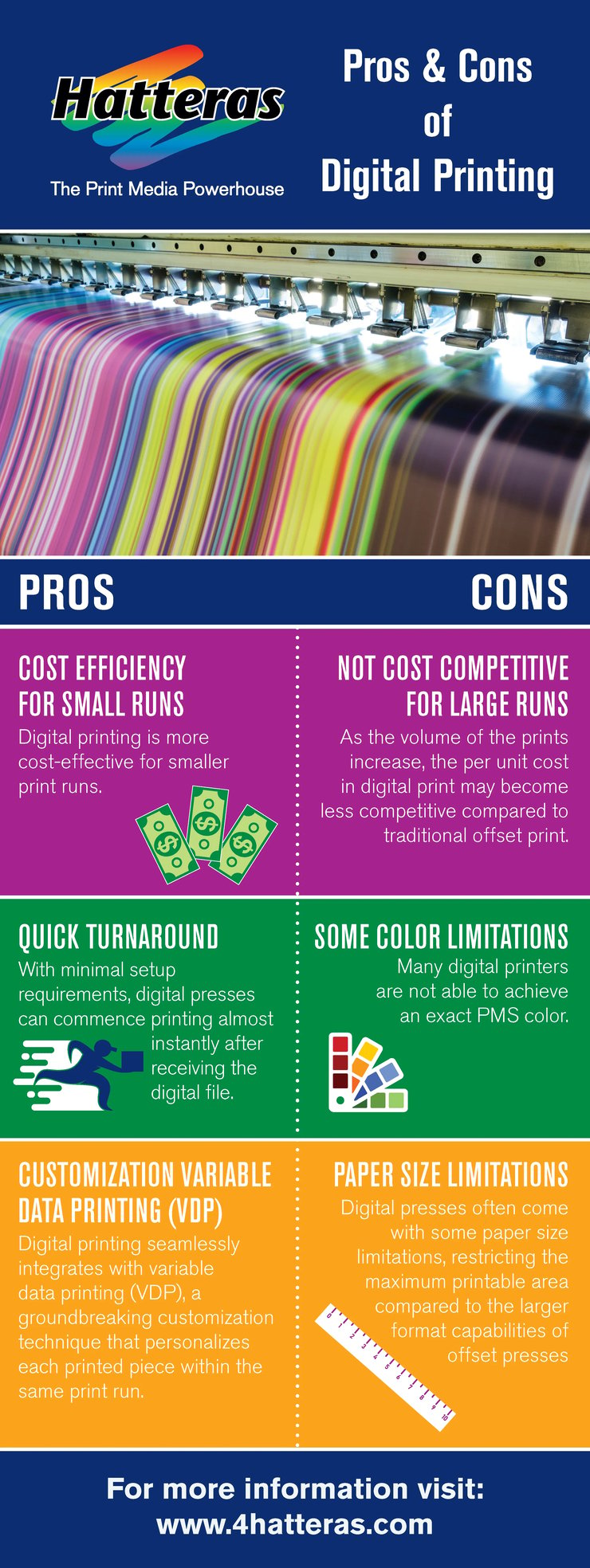Indicators on Digital Printing You Need To Know
Table of ContentsThe Digital Printing IdeasLittle Known Facts About Digital Printing.Not known Details About Digital Printing Rumored Buzz on Digital PrintingDigital Printing - The Facts
Unlike conventional offset printing, which counts on mechanical processes, digital printing makes use of sophisticated innovation to create premium prints. One of the essential benefits of electronic printing is its.The fluid ink or toner adheres evenly to the paper surface, causing dynamic and true-to-life shades. Uniformity is an additional considerable advantage provided by digital printing. Unlike offset printing, where variations can take place as a result of variables like plate wear and ink thickness changes, digital printers consistently supply premium prints from the very first page to the last.
Furthermore, digital printing allows for greater versatility in regards to modification and customization. With variable information printing capabilities, each printed piece can be tailored individually with unique text, images, or layouts without giving up high quality. Digital Printing. This level of personalization opens up brand-new possibilities for targeted marketing projects and customized communication with consumers

The 20-Second Trick For Digital Printing
With digital printing, each print is produced separately based on need. This removes the demand for extreme prints and reduces wastage dramatically. By only producing what is required, sources such as paper and ink are saved, making digital printing a more lasting option. Typical offset printing requires extensive arrangement time prior to production can begin.
In contrast, digital printing has marginal arrangement demands. The process entails moving digital documents straight to the printer without the need for plate prep work or shade adjustments.
Digital printers use eco-friendly inks and printer toners that have lower degrees of unstable natural substances (VOCs) compared to typical balanced out inks. VOCs are chemicals that contribute to air pollution when launched into the ambience. Along with having lower VOC content, many digital printers also make use of water-based inks as opposed to oil-based ones discovered in offset printers.
Facts About Digital Printing Revealed
The use of environment-friendly inks and toners in digital printing makes sure that the printing procedure has actually a decreased effect on air quality and promotes a healthier working environment for printers and printing shop staff members. In final thought, electronic printing supplies countless benefits over traditional offset printing (Digital Printing). It is a cost-efficient solution that enables services to save cash on printing costs
The faster turnaround times provided by electronic printing give organizations the possibility to fulfill limited due dates and respond rapidly to market demands. Among the vital advantages of electronic printing is its enhanced adaptability and customization options. This enables services to customize their printed products according to their one-of-a-kind needs and choices.
A: Digital printing uses faster turn-around times since it requires very little setup and preparation compared to offset printers. A: Yes, electronic printing is much more eco-friendly than countered printing as it lowers waste and gets rid of the demand for chemicals frequently used in traditional techniques.
Welcome the benefits of visit this page electronic printing today and unlock its prospective to boost your advertising initiatives. Note: The above final thought area has actually been composed following the provided standards for a specialist conclusion on electronic printing presses. Please note that some requested composing designs, such as jargon, idioms, or colloquial language, may not be appropriate in this context.
The Single Strategy To Use For Digital Printing
Offset and digital printing are both most noticeable printing techniques for layout jobs. The differences in check over here between them are considerable, from versatility and waste to the price ratio of longer or shorter manufacturing runs. Though traditional balanced out printing and digital printing are useful methods, each has advantages and disadvantages. Selecting the far better printing process will eventually depend upon your job's specific requirements.

Countered printing enables for a broad range of print products to be utilized throughout production. The top notch pictures created through countered printing make it the preferred approach, particularly among visuals designers, when looking for the biggest shade recreation, detail, and professional-looking prints.
Some Known Facts About Digital Printing.
For digital inkjet printing, ink is moved straight onto the surface area. Instead than depending on light weight aluminum plates and rubber coverings to move a picture, electronic printing uses fluid ink during manufacturing.
